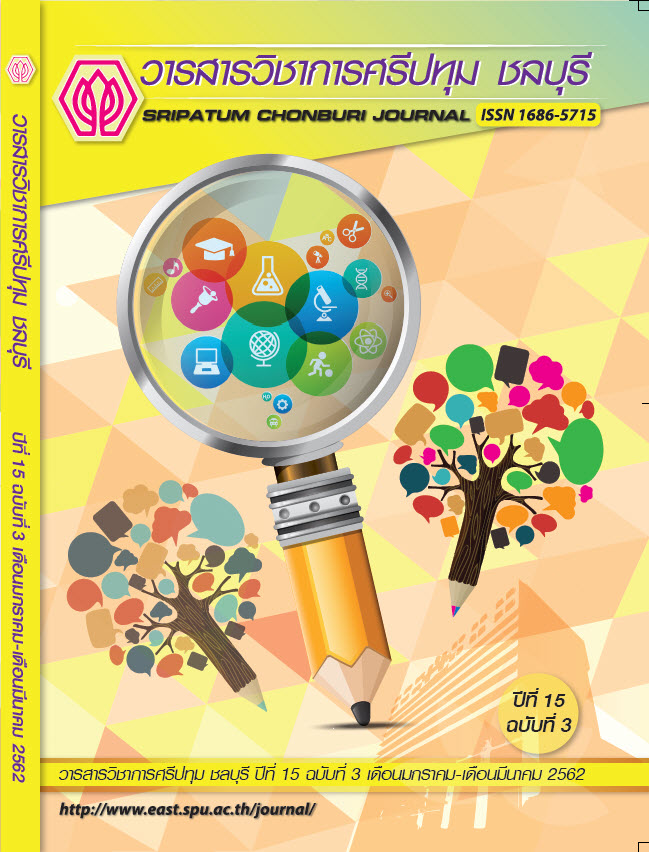DIGITAL MEDIA DESIGNER ATTRIBUTION
Keywords:
digital media designer, academician, professionals, digital eraAbstract
The instrument used for the digital media designer attribution research was a Delphi technique with specific samples selected of 20 experts; a group of 10 scholars from academic or higher education institutes nationwide that offer courses in communication arts or journalism, and another group of 10 digital media professionals who hold an undergraduate degree and have at least 5 years’ experience in media design for newspapers, magazines, and electronic media including television, radio, film, news media, and internet. The research method used to collect data includes structured interviews, and a 5-scale rating questionnaire. Statistics used in data analysis include median and quartile range. The result indicated that: 1) knowledge base of designers should obtain well knowledge of communication skills (listening, speaking, reading and writing), creative content knowledge, media literacy, images usage, and able to communicate in English well, 2) network base, media designers should be friendly, discipline, a team player, optimistic, responsible, have professional ethics, and network of ideas and collaboration, 3) technology & innovation base, the media designers should have good skills of using equipment and tools such as computer, smart phone, and applications related to communication. They should be able to use these new communication gadgets, social media, and under the production process of digital media era, 4) creativity base, the media designers like to receive messages, texts, pictures, gifs, sound, and the surrounding messages. They should be imaginative, problem solver, flexible, have experiences in media work, and do multitasking, and lastly, 5) entrepreneurship base, these media designers should have leadership skills, be honest, and have morality of administration.
References
ฐิตินัน บ. คอมมอน. (2559). การบริหารจัดการสื่อโทรทัศน์ในยุคดิจิทัลหลอมรวม. วารสารสุทธิปริทัศน์,
30(95), หน้า 212-222.
ณิชชา วัชระชยะกูล และสุรพงษ์ โสธนะเสถียร. (2558). การปรับตัวของนิตยสาร A Day ในยุคดิจิทัล. วิทยานิพนธ์วารสารศาสตรมหาบัณฑิต สาขาวิชาการบริหารสื่อสารมวลชน, คณะวารสารศาสตร์
และสื่อสารมวลชน มหาวิทยาลัยธรรมศาสตร์.
ทัณฑกานต์ ดวงรัตน์ และกุลทิพย์ ศาสตระรุจิ. (2553). การศึกษาเปรียบเทียบบทบาทในการปฏิบัติงานและ บุคลิกภาพของนักประชาสัมพันธ์ระหว่างองค์กรภาครัฐและภาคเอกชน. วารสารสุทธิปริทัศน์, 24(73), หน้า 101-128.
เมธาวี แกวสนิท. (2559). นักประชาสัมพันธ์ยุคใหม่ คิดสร้างสรรค์ได้ ใช้เทคโนโลยีเป็น. วารสารวิชาการ มหาวิทยาลัยอีสเทิร์นเอเชีย ฉบับสังคมศาสตร์และมนุษยศาสตร์, 6(2), หน้า 34-41.
พันธ์พรหม รังสิธารานนท์. (2558). การพัฒนาสมรรถนะพนักงานฝ่ายทรัพยากรมนุษย์ในบริษัทกลุ่ม อุตสาหกรรมยานยนต์และชิ้นส่วน. วิทยานิพนธ์ปรัชญาดุษฎีบัณฑิต สาขาวิชาการพัฒนาทรัพยากร มนุษย์, บัณฑิตวิทยาลัย มหาวิทยาลัยรามคำแหง.
ภัทฑิยา โภคาพานิชย์. (2559). กลยุทธ์การปรับตัวของคลื่นวิทยุในยุคสื่อดิจิทัล กรณีศึกษาคลื่นวิทยุ Cool Fahrenheit 93. วิทยานิพนธ์นิเทศศาสตรมหาบัณฑิต, บัณฑิตวิทยาลัย มหาวิทยาลัยกรุงเทพ.
ภัทราภรณ์ ประทุมชาติ. (2555). คุณสมบัติของผู้สื่อข่าวที่ดี (ออนไลน์). เข้าถึงได้จาก:
https://plus.google.com/109607996459368849339 [2560, 19 มิถุนายน].
สันทัด ทองรินทร์. (2548). เอกสารการสอนชุด การบริหารกิจการสื่อสาร. นนทบุรี: สำนักพิมพ์ มหาวิทยาลัยสุโขทัยธรรมาธิราช.
Athique, A. (2013). Digital media and society: An introduction. Malden, MA: Polity.
Canada’s Centre for Digital and Media Literacy. (2012). Digital literacy fundamentals (Online). Available: http://mediasmarts.ca/digital-media-literacy-fundamentals/digital-literacy- fundamentals [2017, June 19].
Dewdney, A., & Ride, P. (2014). The digital media handbook (2nd ed.). London, UK: Routledge.
McClelland, David C. (1973). Testing for competence rather than intelligence. American Psychologist, 28(1), pp. 1-14.
Siapera, Eugenia. (2012). Understanding new media. London, UK: Sage.
Downloads
Published
Issue
Section
License
บทความทุกบทความเป็นลิขสิทธิ์ของวารสารวิชาการศรีปทุม ชลบุรี



